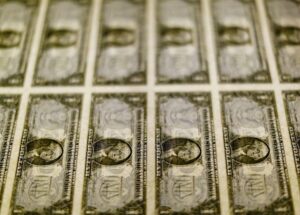As we approach the end of summer, the financial markets are heating up with anticipation for the crucial U.S. jobs report at the end of the week. The dollar has been gaining strength against the euro and yen, as traders adjust their expectations for Federal Reserve policy easing.
The dollar reached a two-week high against the euro and a two-week high against the yen as well. This surge in the dollar was supported by a rise in long-term Treasury yields and steady U.S. inflation data, reducing the likelihood of a larger 50 basis point rate cut by the Fed.
Currently, traders are placing a 33% probability of a 50-basis point rate cut this month, compared to a 67% probability of a quarter-point cut. This shift in expectations has been influenced by various economic data releases, including the upcoming non-farm payrolls report on Friday.
Economists are predicting an addition of 165,000 jobs in August, which would be an improvement from the previous month’s increase of 114,000. A positive jobs report could strengthen confidence in the economy and support expectations for a 25-basis point rate reduction by the Fed.
Despite the recent dollar strength, analysts believe that this trend may not continue for long. The outlook for the euro remains uncertain, as both the Fed and the European Central Bank are expected to ease monetary policy this month.
While U.S. Treasury bonds will not be trading on Monday due to a public holiday, the 10-year yield stood at 3.9110% following a slight increase on Friday. In addition, the British pound remained relatively flat against the dollar, hovering near its recent low.
As we head into a new week of trading, all eyes will be on the upcoming U.S. jobs report and any further developments in the ongoing trade tensions and monetary policy decisions. Stay tuned to Extreme Investor Network for more insights and updates on the latest financial market news.

